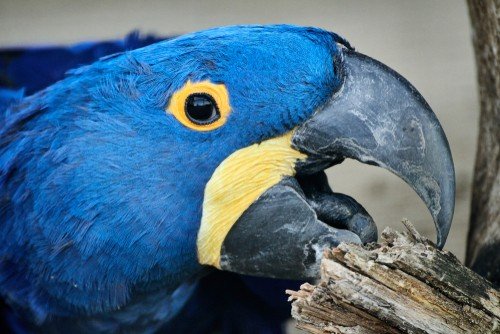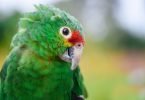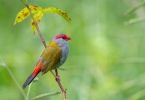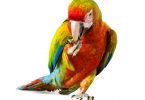Birds are wonderful house pets. Bird owners know both the joy and challenge of bringing a new pet bird into their homes. As a bird owner, you want to know as much information as possible about the possible diseases that may affect your pet. Moreover, you also want to be informed about the necessary methods to help prevent them from harming your pet. Psittacine Beak and Feather Disease or PBFD is one of the most aggressive diseases in aviculture nowadays. Here are some things you should know about the disease.
What is Psittacine Beak and Feather Disease in Birds (PBFD)?
Psittacine Beak and Feather Disease or PBFD is a disease affecting parrots, causing them to break their beaks and lose their feathers, hence the name. The disease is slowly aggressive and, at times, fatal. Moreover, Psittacine Beak and Feather Disease, as the name implies, only affects birds belonging to the psittacine or parrot family. These include birds like macaws, parakeets, and other parrots.
What is the Psittacine Beak and Feather Disease Virus?
Circovirus – a virus from the family Circoviridae is the causative agent of Psittacine Beak and Feather Disease. For this, the disease is also called Psittacine Circoviral Disease or PCD. The virus is a circular, non-enveloped virus that measures around 15 micrometers in diameter. PBFD virus primarily targets the follicles of the beaks and feathers of parrot birds.
The disease has a long course and duration, making it a chronic disease for most birds. Depending on the bird’s immune system, manifestations would vary from mild to very severe. It is often referred to as Bird AIDS because of the resemblance of the course of illness to human AIDS.
How does a bird get Psittacine Beak and Feather Disease Virus?
The PBFD virus is transmitted both vertically and horizontally. Vertical transmission refers to transmission from parent to offspring. If the parent bird currently has the infection, the chance of passing it to the offspring is very high. Meanwhile, horizontal transmission is the transmission from everything else – including the environment, other birds, etc.
Birds with low immune systems are most susceptible to the virus. It especially includes newborn birds whose immune systems are still new and weak. Thus, if you have newborn birds, they might benefit from taking extra precautions against the virus.
How is Psittacine Beak and Feather Disease Virus transmitted?
Direct contact with the virus is the main mode of transmission. Thus, pet owners should observe proper hygiene at all times. The virus is transmitted through various modes such as crop secretions, bird feather dust, skin particles, and fecal or urine.
Not all who come in contact with the virus go on to develop the disease. Adult birds with intact immune systems would usually have the virus in their system without developing any disease. These birds are called carriers. Virus carriers are those that have the virus in their bodies but don’t exhibit any signs and symptoms of the disease. Their secretions, feces, and urine can all potentially infect other birds as well.
Other modes of transmissions (inhalation and ingestion) were also reported. However, the main mode is direct contact.
What are the symptoms of Psittacine Beak and Feather Disease?
Most of the manifestations of Psittacine Beak and Feather Disease appear on the bird’s beaks and feathers – as the disease’s name suggests. In an acute setting, infected birds would manifest with lethargy or severe weakness. It would be most apparent to bird owners, especially if their pet bird is usually lively and cheerful.
Furthermore, birds would also have a loss of appetite. This could be a gradual loss of appetite. Bird owners would notice the bird-eating less food than usual until the bird doesn’t want to touch their feeds. Along with the loss of appetite, infected birds also have vomiting and diarrhea. This is when bird owners would usually start to get alarmed.
The most telling signs of the disease are changes in the bird’s beak. Typically, birds’ beaks are matte. Over time, as the virus takes over, beaks would turn glossy. Furthermore, the hair follicles become destroyed as well. It will ultimately affect the feathers of the bird. Feathers become more fragile, grow short and abnormal in shape and thickness.
As with most viral diseases, the signs and symptoms are nonspecific. Having the signs and symptoms stated above doesn’t automatically confirm that the bird has PBFD. However, if your bird starts to manifest with these symptoms, immediately bring them to the veterinarian for a check-up.

How do you diagnose Psittacine Beak and Feather Disease?
Veterinarians use histologic testing to identify the virus in infected birds. However, this method does not help identify the virus during the incubation period. It is also not a definitive diagnostic method.
Hemagglutinin Assays detect Circovirus antigens and antibodies. Polymerase Chain Reaction or PCR, as well as Quantitative Polymerase Chain Reaction or qPCR, are both used to diagnose PBFD. PCRs determine the presence of the Circovirus DNA in the bird’s blood, tissues, feces, or other secretions.
Typically, vets make the diagnosis without laboratory tests. The classic presentations of PBFD, such as loss of feathers due to loss of powder, abnormalities of the beak, etc. can be enough to make the diagnosis. However, vets should rule out other causes of beak and feather abnormalities first to make a final diagnosis.
What is the treatment for Psittacine Beak and Feather Disease?
The Psittacine Beak and Feather Disease currently don’t have any treatment. The main treatment offered to infected birds is supportive. Once signs and symptoms begin to show, there is no definite treatment that can be administered.
Veterinarians usually offer supportive care for infected birds. Supportive care is essential to make sure that birds have an improved quality of life while affected by the disease. Prevention of secondary diseases such as bacterial and infections is also the main priority for birds with Psittacine Beak and Feather Disease.
What is the life expectancy of Psittacine Beak and Feather Disease?
Surprisingly, some birds do spontaneously recover from Psittacine Beak and Feather Disease. However, previously infected birds continue to shed the virus in their secretions, urine, and feces. Thus, they are unable to eliminate the virus from their body completely.
The most common prognosis for the disease is poor. The long disease course worsens the birds’ immune system. This makes them prone to developing bacterial, fungal, and possibly other viral infections. Birds usually die from severe weight loss from loss of appetite and difficulty of eating as well.
Reports say that the majority of birds with Psittacine Beak and Feather Disease die due to secondary infections after 6-12 months.
How do you prevent Psittacine Beak and Feather Disease?
Unfortunately, vaccines for Psittacine Beak and Feather Disease does not exist. Thus, the most effective way to prevent the disease is to observe proper hygiene and sanitation at all times.
First, if you own plenty of birds and one bird suddenly appears ill, it is best to quarantine the sick bird to prevent the spread of infection. Moreover, if you’re bringing a pet bird home for the first time, quarantine the new bird before introducing them to the others. This will avoid spreading any possible infections your new bird might have.
How to do proper regular cage maintenance?
Second, regular cage maintenance is of utmost importance. Use a special bird cage cleaner to clean your bird’s cage effectively. Make sure to scrub down all dirt and dried feces, as well as a brush off feather dust and other droppings. Use a special cleaning brush to help with this step.
When using cleaning solutions, make sure to check for harmful chemicals that may be ingested by your bird. Stick with special cleansers that are non-toxic and free of harsh chemicals. If you’re having trouble scrubbing down some stains such as from feces or urine, try a special stain remover.
Use antibacterial bird cage liners for extra protection. If your bird is usually playful and tends to create a lot of mess, cage liners will make it easier and more convenient for you to clean regularly.
While cleaning cages, equip yourself with gloves and face masks to avoid inhaling or ingesting fecal particles or feather dust. Dust off your clothes as well or change into new clothes after cleaning the bird cages.
Lastly, boosting your bird’s immune system is the best and easiest thing you can do as prevention. Properly feed your birds at the right time with the right feeds. Furthermore, regularly take them to the vet for check-ups to spot any diseases early on. A loving and nurturing home to your pet birds is an immune system booster because it lessens their stress.
Conclusion
The Psittacine Beak and Feather Disease is indeed a fatal and slowly aggressive illness that can harm your bird. Equipped with the right knowledge and information about infectious diseases, bird owners can take matters into their own hands by helping their pets avoid contracting the disease. If you suspect your bird of having any disease, coordinate with your veterinarian.
To know more about common health problems in birds, click this article Bird Health Problems – What You Need to Know About the Types, Treatments, Symptoms, and Prevention.






